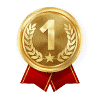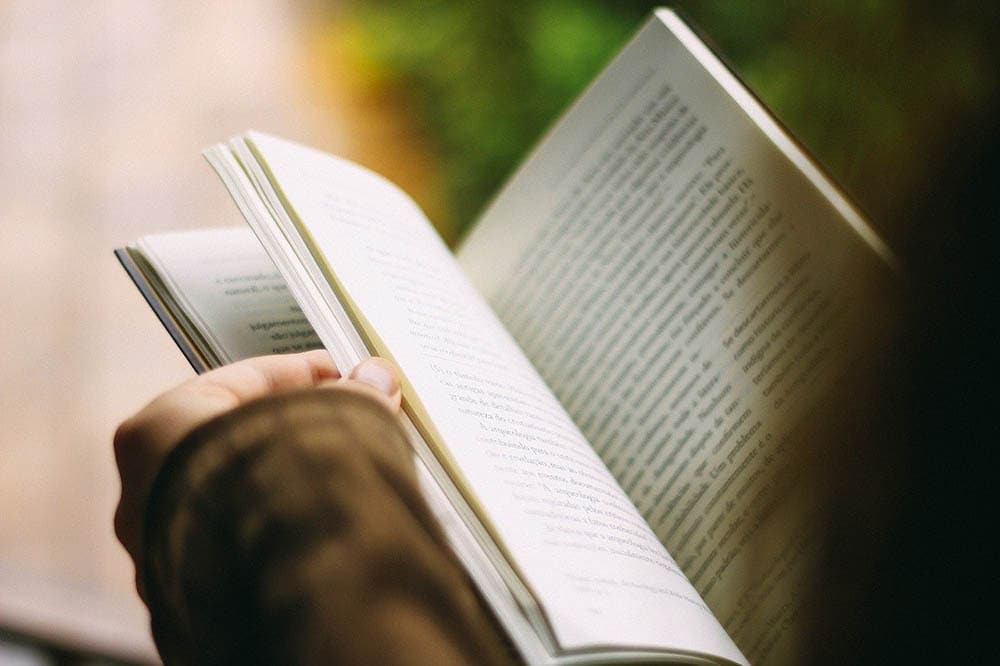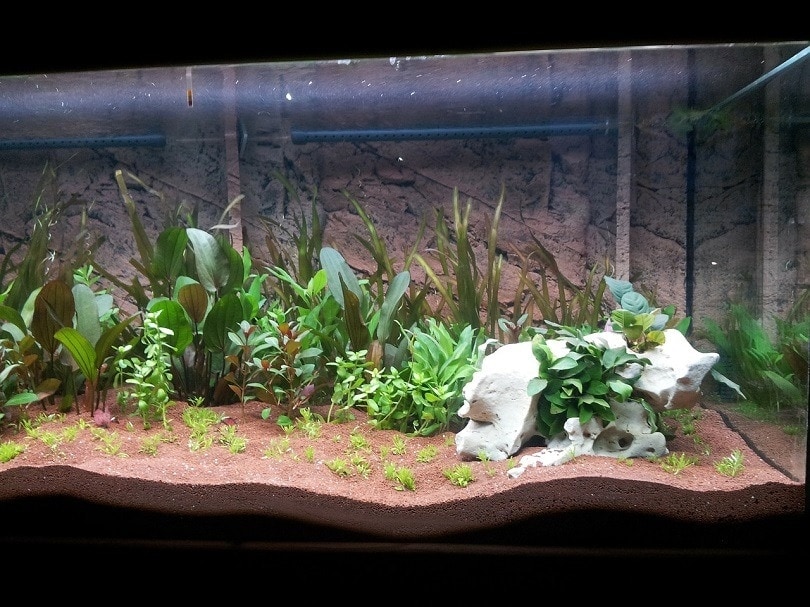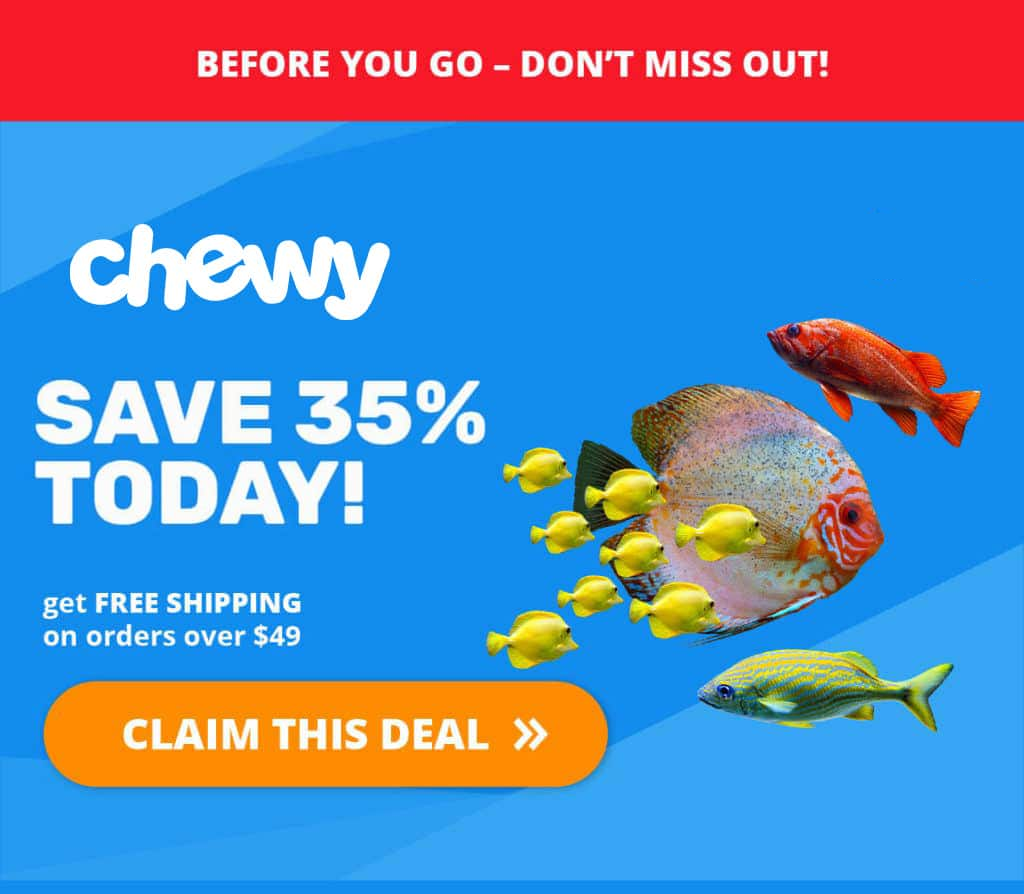7 Best Red Aquarium Plants in 2024 – Reviews & Buyer’s Guide

Updated on

Constructing an aquarium is a much more in-depth and time-consuming process than most people would imagine when they first get started. The amount of care and planning that goes into choosing your fish is substantial. But that’s only half the battle. You’re going to have to put just as much effort into picking and putting together the rest of your aquarium, from filtration and cleaning to plants and decorations.
Plants can provide a wide range of benefits for your aquarium, but there are also quite a few considerations to keep in mind. Plants need upkeep just like fish, and you also have to think about aesthetics. We’ll get into the details later, but if you’re looking for a way to warm up the décor in your fish tank, red plants are a great way to liven things up, and we’ve got seven to show you in the following reviews.
A Quick Comparison of Our Favorites of 2024
| Rating | Image | Product | Details | |
|---|---|---|---|---|
| Best Overall |
 |
Red Root Floaters |
|
Check Price |
| Best Value |

|
Tiger Lotus Lily |
|
Check Price |
| Premium Choice |

|
Rotala Wallichii |
|
Check Price |

|
Ludwigia Repens Rubin |
|
Check Price | |

|
Cabomba Purple |
|
Check Price |
The 7 Best Red Aquarium Plants
1. Red Root Floaters – Best Overall
| Growth rate: | Fast |
| Max height: | 1 inch |
| Light Demands: | Low to high |
| CO2: | Low |
| Difficulty: | Easy |
If you’re looking for a floating red plant, then look no further than the red root floater. It’s easy to care for, thriving in all light levels, and since it’s a floating plant, no substrate is required, and it can’t be uprooted by curious fish. It does well in a wide range of pH and temperature levels, but it does require gentle water movement to thrive. With proper care, red root floaters will reproduce and spread quickly, eventually covering the surface of your tank. They’re extremely easy to keep under control, though, since you can simply remove plants when you have too many.
- Thrives in all light levels
- No substrate needed
- Easy to care for
- Rapid growth and reproduction rate
- Easy to keep under control
- Requires gentle water movement
2. Tiger Lotus Lily – Best for the Money
| Growth rate: | Fast |
| Max height: | 5-25 inches |
| Light Demands: | Medium to intense |
| CO2: | Low |
| Difficulty: | Easy |
The red tiger lotus is our top pick as a red aquarium plant, and it’s easy to see why. This is a beautiful plant, and it will put out two types of leaves for you: heart-shaped, slightly frilly submerged leaves and large, flat leaves that float on the surface of the water like lily pads. With proper care, this plant can get large enough to draw eyes to your tank, but it’s also suitable for small and nano tank environments. It’s easy to grow and prune, although it does best with root tabs or enriched substrate and requires moderate to high lighting.
- Two types of leaves
- Can get large
- Manageable for small tanks
- Easy to care for
- Prunes easily
- Needs root tabs
- Grows best with moderate to high lighting
3. Rotala Wallichii – Premium Pick
| Growth rate: | Fast |
| Max height: | 10–30 inches |
| Light Demands: | High |
| CO2: | High |
| Difficulty: | Moderate |
Rotala wallichii, also known as whorly Rotala, is a great plant for filling up space. It grows fluffy and tall, making it a great background plant. It can be difficult to care for, so be prepared to provide it with high lighting. Although it is somewhat delicate, this plant can be grown submerged or immersed, although the plant will look different depending on which way it is grown. It tolerates a wide temperature range, but it’s a tasty plant that many fish will enjoy eating, especially goldfish, tetras, and cichlids. It propagates easily and is easy to prune.
- Grows outward and upward
- Can be grown submerged or immersed
- Tolerates a wide temperature range
- Propagates easily
- Easy to prune
- Moderate to difficult care level
- Requires high lighting
- Many fish enjoy eating it
4. Ludwigia Repens Rubin
| Growth rate: | Fast |
| Max height: | 12–20 inches |
| Light Demands: | High |
| CO2: | Low |
| Difficulty: | Easy |
Super Red is a relatively easy plant to care for, growing quickly and with minimal care. It’s easy to prune and propagates easily and quickly. It doesn’t require CO2 or fertilizers, but if you want it to maintain its red hue, it needs moderate to high lighting. This is a tall plant that makes a wonderful background plant, and you can propagate it simply by trimming the stems and planting the trimmings into the substrate.
- Easy to care for
- Doesn’t require CO2 or fertilizers
- Good background plant
- Easy to propagate
- Moderate to high lighting is required to maintain red color
5. Cabomba Purple
| Growth rate: | Moderate |
| Max height: | 6–8 inches |
| Light Demands: | Moderate |
| CO2: | Low |
| Difficulty: | Easy |
Purple Cabomba is an attractive plant that creates feathery leaves that flow beautifully in the water. It is easy to care for, but it does require a gentle hand when pruning. If water quality is poor, this plant will shed its leaves, making quite a mess in your tank, and potentially clogging your filter. Purple Cabomba can be a good measure of your water quality since it prefers high water quality and will begin to perform poorly in poor water quality. Although it does best in nutrient-rich water, it doesn’t require CO2 to thrive. Moderate to high lighting is needed to support red and purple coloration.
- Unique and feathery appearance
- Easy to care for
- Can indicate water quality issues
- Doesn’t require CO2
- Shed leaves make a mess
- Requires nutrient-rich, high-quality water
- Moderate to high lighting is required to support red and purple coloration
6. Alternanthera Bettzickiana Red Bunch

| Growth rate | Moderate to fast |
| Max height | 12” |
| Light demands | Moderate to high |
| CO2 | Moderate |
| Difficulty | Easy to moderate |
Alternanthera Bettzickiana comes in two varieties; green and red. The red variety is relatively easy to grow, though it does require added CO2, especially if you want to see that red coloration. This plant also needs substantial amounts of light. Without proper lighting, nutrients, and CO2, you’ll find the leaves turning orange.
This plant grows to a maximum height of about 12 inches, but it’s best used as a mid-ground plant with regular trimming to prevent it from over-growing other members of the tank. If you want additional Alternanthera Bettzickiana plants, you can easily propagate them from the stem clippings of your first plant. Since this plant grows quickly, you could have several clusters in a short time.
- Propagates through planting trimmed stems
- Grows quickly
- Leaves can turn orange without substantial nutrients and lighting
7. Ludwigia Repens Rubin Super Red Ruby Bundle
| Growth rate | Slow |
| Max height | 20” |
| Light demands | High |
| CO2 | None |
| Difficulty | Easy |
This plant is known for its deep red coloration. It’s easy to care for, though it does require ample amounts of light. More light will also help the red coloration to come out, so you’ll want to provide this plant with as much light as possible. You won’t need any added CO2, though; just lots of patience since this is a slow-growing aquatic plant.
If you have sand as a substrate in your tank, you won’t want to plant a Ludwigia Repens Rubin. Sand can suffocate the roots and kill them. But that doesn’t mean you’re out of luck. This species can also be grown on the surface of the water, providing multiple growing options.
Several things are likely to kill this plant. If you have aggressive fish in your aquarium, they’ll eat it until it dies. It will also die in the shade. But if you can avoid these two killers, you’ll have an easy time growing the Ludwigia Repens Rubin, and it can add some deep red color to your tank.
- Requires very little upkeep once planted
- Can also be grown on the water’s surface
- Doesn’t require much CO2 for a deep red color
- Doesn’t survive in the shade
- Aggressive fish like to eat this plant
Buyer’s Guide: How to Pick the Best Red Aquarium Plants
When you first get started putting together an aquarium, it seems like a fairly simple task. But once you get a bit deeper, you start to realize how each decision impacts your other choices and the other residents of the tank. This can make it much harder to choose additional plants and fish to expand your aquarium, as you worry about each new member’s impact.
If you’re still trying to figure out which of these plants might be a good choice for your current setup, then this short buyer’s guide is for you.
Three Types of Aquarium Plants
When putting together your aquarium, it’s easy to first look at it as a whole. But you really want to divide it into parts when you’re considering plants. You can split the tank into three sections, placing different types of plants in each section for the best effect.
Background Plants
Background plants populate the back of the tank so they won’t block others from view. These are generally the largest plants, often bushy and dense. If they were in the front of the tank, you wouldn’t be able to see all the other fish and plants! But as a background, they can provide a vibrant backdrop that highlights all of the tank’s other residents.
Foreground Plants
As you might expect, foreground plants belong in the front of your tank. These are often the smallest plants, generally growing out rather than up. Many of these are mosses or grasses that won’t grow to a very tall height but can spread out to provide lots of color to the tank without blocking the rest of the tank from view.
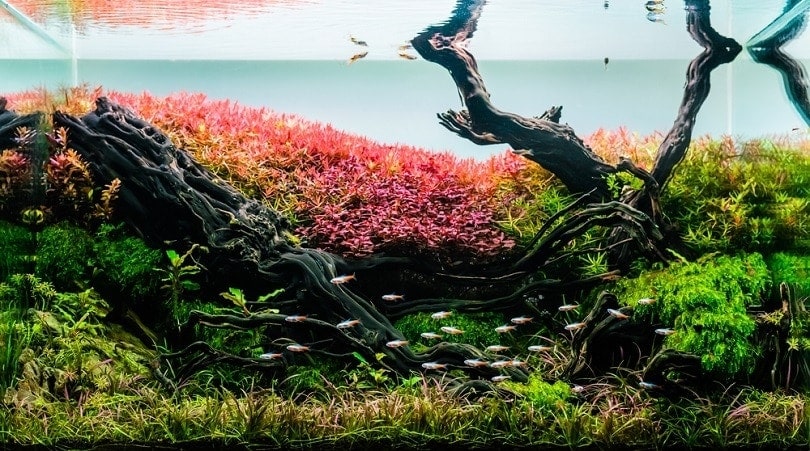
Mid-ground Plants
Mid-ground plants are spread throughout the main part of the tank. There can even be a large mid-ground plant used as a centerpiece. The size of your mid-ground plants will depend on the overall size of your aquarium. In large setups, mid-ground plants can be quite tall. You want these plants to be colorful to keep your tank lively.
Consider Your Substrate
If your tank is already filled with a particular substrate, you’re not going to want to go through the hassle of changing it all just to accommodate a new plant species you want to add to the tank. But there are some species of plant that don’t do well in some substrates. For instance, sand will suffocate the roots of some plants. So, before purchasing a new plant, ensure that it’s compatible with the substrate on the floor of your tank.
Lighting for Aquarium Plants
Your aquarium likely already has a decent light for your fish and other living residents. But plants have different light needs than fish. While some plants can survive and even thrive in low-light conditions, other plants need substantial levels of light to be healthy. And since they’re often at the bottom of the tank, the light has to be stronger to reach them.
Pay attention to how much light is required by any plants you’re considering. But also keep in mind that too much light without additional CO2 can breed algae. It’s all an interconnected ecosystem that must be kept in balance.
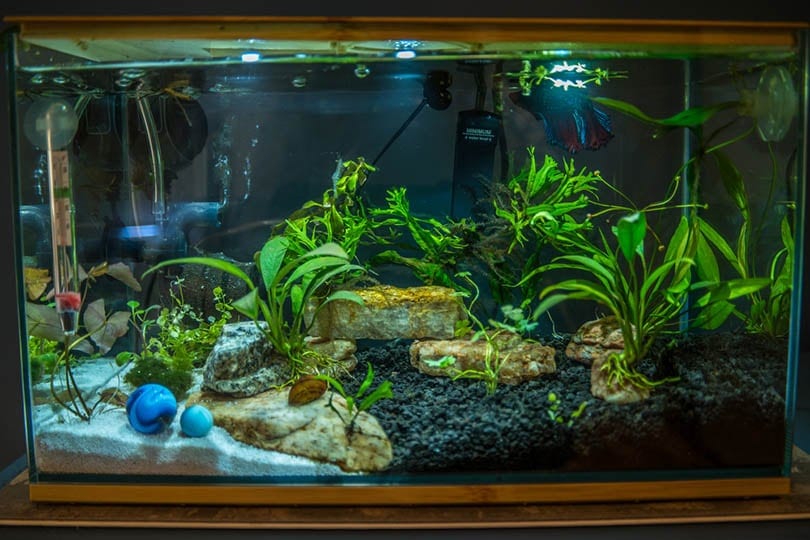
CO2 Makes Your Plants Redder
Some plants can turn red without substantial amounts of CO2 or light. But most plants (even if they’re a red plant) will require a healthy dose of light, CO2, or both to really develop their red coloration. If you want your tank to be as vibrant and colorful as possible, then you’ll want to look into additional or improved light sources and CO2 systems.
What About Plastic Plants?
If all of the upkeep and planning required for these plants sounds like too much for you, then you could always consider some plastic plants instead. These plants require no planning or care. Just put them in the tank and enjoy their everlasting beauty. Plus, you have far more options when looking at plastic plants.
For example, this set of two includes one 9-inch and one 15-inch tall red-leafed plant that will never die and doesn’t need nutrients or light. Or this large red fire silk aquarium plant that’s 15 inches tall with large silk leaves perfect for freshwater and saltwater environments.
There’s nothing wrong with choosing plastic plants if you don’t want to perform all the upkeep, planning, and aquarium upgrades that come along with growing exotic aquatic plants. These plastic or silk alternatives are a bit pricier upfront, but they’ll save you loads of time and will always look vibrant and healthy with no wilting.
Conclusion
When it comes to red aquarium plants, the best overall pick is red root floaters, which are extremely easy to care for, reproduce quickly, and are easy to keep under control. Red tiger lotus is a beautiful plant that will produce different leaves, depending on the leaf height, and it’s the best option for the money. If you’re looking for a fluffy plant to take up space, then Rotala wallichii is a good option that can be grown submerged or immersed. Remember to take your tank lighting and water parameters into account when choosing your red plants. Hopefully, these reviews will have your aquarium full of colorful plants in no time.
Featured Image Credit: jurgko, Pixabay
